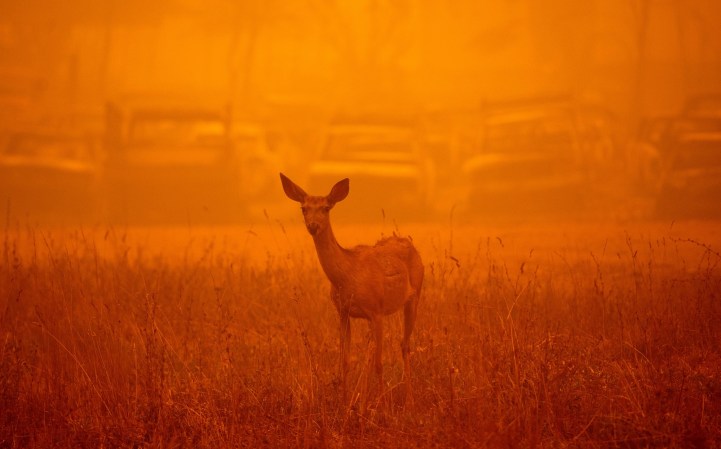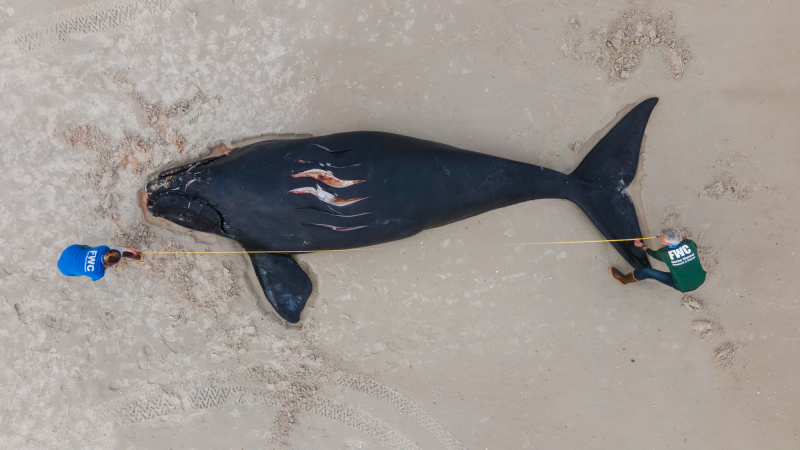

This article was originally featured on High Country News.
The Wyoming toad, which evolved to live in a small slice of southeastern Wyoming, is one of the most endangered amphibians in North America. But now, at least, it will have more room to recover: On Oct. 10, the U.S. Fish and Wildlife Service announced the creation of the Wyoming Toad Conservation Area.
“When we invest in a species like the Wyoming toad, we really can turn it around,” Fish and Wildlife Service Director Martha Williams told High Country News. “This is a perfect example of what we can do when we persevere and give a species time, and when we all work together toward its long-term recovery.”
No one knows exactly how many Wyoming toads used to live in Albany County, Wyoming, though reports from the mid-1900s suggest they were once abundant. They’re a glacial relic, isolated in the Laramie Basin and separated from their closest relative, the Canadian toad, by hundreds of miles. In 1984, after land-use changes, disease and pesticides caused their numbers to crash, they were placed on the U.S. endangered species list. But the species continued to decline, in part because of the deadly chytrid fungus that is still ravaging amphibian populations worldwide. When the last known population of Wyoming toads began to crater, biologists scooped up the remaining 10 individuals to breed in captivity.
For almost 20 years, researchers released captive-bred toads on the Mortenson Lake National Wildlife Refuge and on nearby private properties designated as “safe harbors” under the Endangered Species Act. But the Laramie Basin’s toad population, facing disease and habitat degradation, languished.
In 2017, the agency decided to improve the toad’s chances by working with willing landowners to buy or pay for easements on up to 43,000 acres.
Years later, The Conservation Fund, an environmental nonprofit, purchased 1,078 acres of braided streams, marsh and lush grassland—prime toad habitat, in other words—from a private owner. The Fish and Wildlife Service then bought the land and has now designated it as the Wyoming Toad Conservation Area.
The National Wildlife Refuge system, which is managed by the Fish and Wildlife Service, has historically protected only federal lands, but in 2006, the agency began to designate conservation areas, which primarily include conservation easements on private land. The agency now oversees more than 560 wildlife refuges and 13 conservation areas, while another two conservation areas—one in the Missouri Headwaters of Montana and another in Florida’s Everglades—are in the works.
“When we invest in a species like the Wyoming toad, we really can turn it around.”
The new conservation area secures some much-needed habitat, but the Wyoming toad still faces a long road to recovery. Under the Endangered Species Act, the species needs five separate, stable breeding populations before it can be considered eligible for delisting. Researchers have documented breeding in four Laramie Basin populations over the last six years, but disease, small population sizes and fragmented habitat still threaten the species, says Rachel Arrick, the Wyoming toad recovery coordinator for the Fish and Wildlife Service. She is unable to estimate the number of toads on the landscape, largely because they’re so hard to find, but biologists continue to supplement the local populations with captive-bred animals: This year, 824 adults, 25,211 tadpoles and 260 baby toadlets were released in the Laramie Basin.
The captive toad populations that exist at zoos and rearing facilities across the country mean that researchers can also use these releases to field-test treatments for chytrid, which remains prevalent in the basin. Most recently, Arrick has been studying whether probiotics can boost the toads’ chytrid-fighting microbiome. Researchers are also investigating how and why some Wyoming toads are able to survive chytrid and even acquire immunity to it. This research is particularly important given that 41% of the world’s amphibian species are threatened with extinction, due in part to the fungus.
Laramie Basin landowner Fred Lindzey works with the Fish and Wildlife Service to provide habitat for the toads and facilitate regular surveys on his land. Under his safe harbor agreement, the agency will not demand more of him without his consent. (He is also allowed to change the way he uses his property, but if his activities were to threaten toad habitat, the agency would request permission to collect the resident toads.)
Lindzey acknowledges that restoring a critically endangered species like the Wyoming toad to health is “an uphill battle.” But he takes comfort in the new conservation area.
“It continues to be a good sign that we as people are interested in recovery and keeping these species around,” he said. “And maybe one spring, we’ll wake up and hear so many calling you can’t hear yourself talk.”
Christine Peterson lives in Laramie, Wyoming, and has covered science, the environment and outdoor recreation in Wyoming for more than a decade. Her work has appeared in National Geographic, Outdoor Life and the Casper Star-Tribune, among others. We welcome reader letters. Email High Country News at editor@hcn.org or submit a letter to the editor. See our letters to the editor policy.














